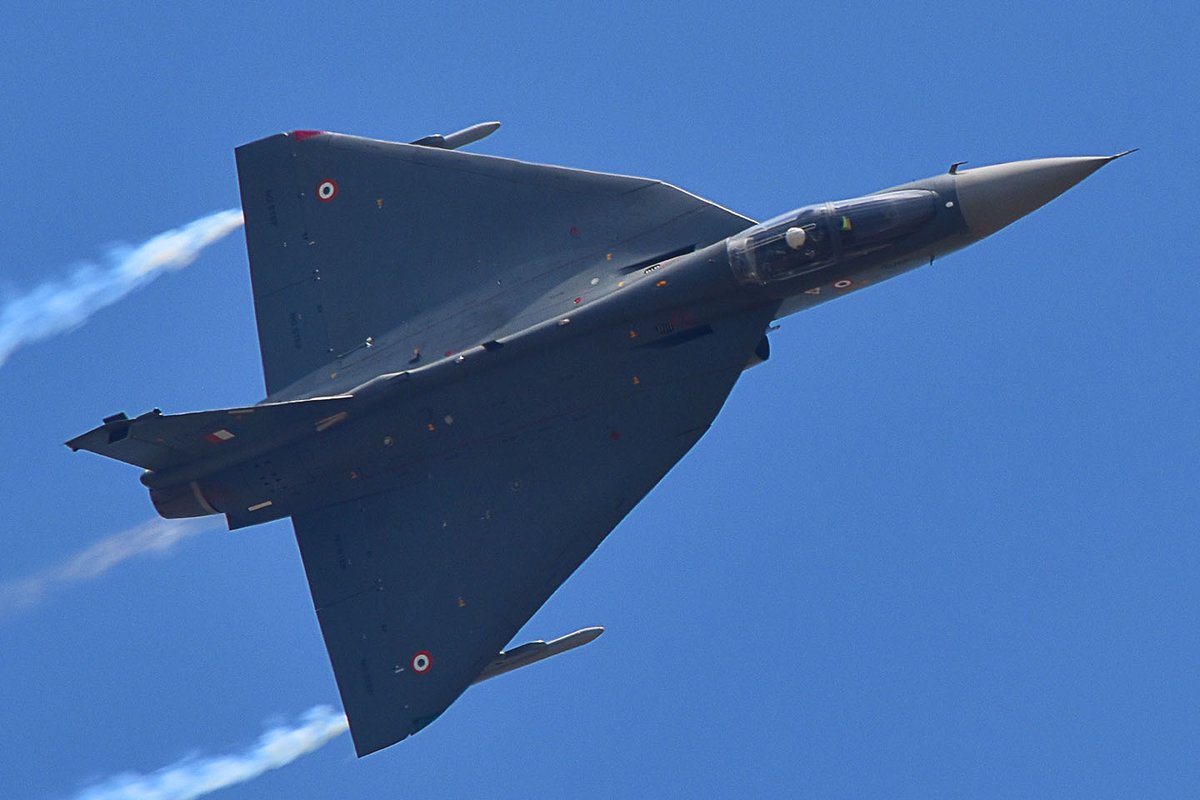Aerospace
Mega Jet Engine Deal With US: GE, HAL To Build Fighter Jet Engines For IAF

As part of Indian Prime Minister Narendra Modi’s official state visit to the US, GE Aerospace announced that it has signed an MOU with Hindustan Aeronautics Limited (HAL) to produce fighter jet engines for the Indian Air Force. This marks a significant development and a crucial step in advancing defense cooperation between the two nations.
HAL to develop LCA-Mk2 at a total cost of Rs 9,000 crore: A game changer(Opens in a new browser tab)
The deal calls for the prospective collaborative manufacture of GE Aerospace’s F414 engines in India, and GE Aerospace is still coordinating with the U.S. government to obtain the required export authorization for this. The Light Combat Aircraft Mk2 programme of the Indian Air Force includes this effort.
With extensive involvement in the sector, including engines, avionics, services, engineering, manufacturing, and local sourcing, GE Aerospace has been operating in India for over four decades. A number of U.S. facilities that now support work on the F414 engine are expecting an increase in volume as a result of today’s announcement, in addition to possible new work in India.
With today’s agreement, GE Aerospace will move closer to fulfilling its prior promise to construct 99 engines for the Indian Air Force as part of the LCA Mk2 programme. It gives the business a good chance to establish a line of goods in India, including the F404 engine that now powers the LCA Mk1 and LCA Mk1A aircraft and the F414-INS6 engine that GE Aerospace was chosen to develop, test, and certify as the AMCA program’s prototype engine. Additionally, GE will keep working with the Indian government on the AMCA Mk2 engine programme.
With over five million flying hours and eight countries operating or ordering F414-powered aircraft, the F414 continues to exceed reliability and time on wing targets. Over 1,600 F414 engines have been delivered worldwide so far.

Aerospace
Boeing Transfers Rocket Stage to NASA, Paving Way for Human Moon Mission

Boeing has achieved a significant milestone by providing NASA with the second core stage of the Space Launch System (SLS) rocket.
This crucial component, crafted at NASA’s Michoud Assembly Facility (MAF), is set to propel the Artemis II crew into lunar orbit, marking humanity’s return to deep space after a 50-year hiatus.
The monumental Boeing-built rocket stage, the largest element of the Artemis II mission, will embark on a journey aboard the Pegasus barge, traveling 900 miles to NASA’s Kennedy Space Center.
Comparison of two legendary aircraft B777x vs B747 aircraft:Click here
Upon arrival, it will be meticulously integrated with other essential Artemis II components, including the upper stage, solid rocket boosters, and NASA’s Orion spacecraft within the iconic Vehicle Assembly Building. This intricate integration process is a vital step toward the eagerly anticipated Artemis II launch, slated for 2025.
“Boeing-built products helped land humankind on the moon in 1969, and we’re proud to continue that legacy through the Artemis generation,” remarked Dave Dutcher, vice president and program manager for Boeing’s SLS program. “Together, with NASA and our industry partners and suppliers, we are building the world’s most capable rocket and paving the way to deep space through America’s rocket factory in New Orleans.”
NASA, Lockheed Martin Reveal X-59 Quiet Supersonic Aircraft:Click here
The delivery of Core Stage 2 marks a significant achievement in the evolution of the SLS rocket. Towering over 200 feet and powered by four RS-25 engines, this core stage, coupled with two solid-fueled booster rockets, will generate a staggering 8.8 million pounds of thrust. This immense power is crucial to launching Artemis II and future missions into the vast expanse of space.
The SLS rocket stands unparalleled in its capability to transport both crew and substantial cargo to the moon and beyond in a single launch. Its extraordinary capacity will facilitate the delivery of human-rated spacecraft, habitats, and scientific missions to destinations including the moon and Mars, ushering in a new era of space exploration.
-

 Travel1 week ago
Travel1 week agoAir India to Expand US Operations with Three New Routes After a Decade
-

 Travel2 weeks ago
Travel2 weeks agoWhy We Should Avoid These Stamps in a Passport
-

 Airlines1 month ago
Airlines1 month agoInvestigations Reveal Fake Chinese Titanium in Boeing and Airbus Jets
-

 Tech4 weeks ago
Tech4 weeks agoChina’s CATL Plans 1,800-Mile Electric Plane Launch by 2027
-

 Airport3 days ago
Airport3 days agoTop 10 Largest Airports in the World by Size
-

 Aerospace4 weeks ago
Aerospace4 weeks agoChina’s Fighter Jets Turn Wings into Autonomous Drones
-

 Airlines4 days ago
Airlines4 days agoAir India Rolls Out A350s for Delhi-New York JFK and Newark Routes
-

 Defence3 weeks ago
Defence3 weeks agoBoeing Enhances Chinook with New Engines and Block II Upgrades at $96 Million







